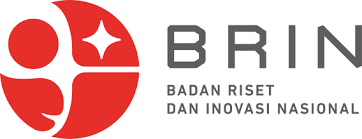Internet Connection Obstacles in General Speaking Courses and Their Influence on Learning Effectiveness
DOI:
https://doi.org/10.58355/manajia.v2i2.21Keywords:
Internet Connection, Courses, General Speaking, Learning EffectivenessAbstract
Indonesia in 2020 was hit by a covid-19 pandemic, all activities were carried out online because it was to prevent and reduce the spread of the covid-19 virus. In learning activities, it also uses an online system at the school and university levels. An internet connection, and supporting devices such as laptops or gadgets are important in online learning. The obstacles experienced by students in general are inadequate internet connections, or constrained due to weather. Therefore, this study aims to analyze the difficulties of students in learning speaking courses with the constraints of internet conditions and their effect on the effectiveness of learning. This research uses qualitative methods and the research design is a case study. The results of this study can be concluded that internal factors such as network constraints or internet connections faced by students in the general speaking learning process are quite influencing the learning process, especially for students whose residences do not have a good internet network. However, online learning also has a positive side, namely that students can study anywhere even if they are outside the home, they can still participate in learning activities.
Downloads
References
Ahmadi & Hermawan. (2013). E-Business & E-Commerce. Yogyakarta: Andi.
Al-Auwal, T. M. R. (2017). Reluctance of Acehnese youth to use Acehnese. Studies in English Language and Education, 4(1), 1-14. https://doi.org/10.24815/siele.v4i1.7000
Al Sharaeai, W. A. A. (2012). Students’ perspectives on the use of L1 in English classrooms [Unpublished master’s theses]. Iowa State University. Alshehri, E. (2017). Using learners’ first language in EFL classrooms. IAFOR Journal of Language Learning, 3(1), 20-33. https://doi.org/10.22492/ijll.3.1.02
Amin, F. M., & Sundari, H. (2020). EFL students’ preferences on digital platforms during emergency remote teaching: Video Conference, LMS, or Messenger Application? Studies in English Language and Education, 7(2), 362-378. https://doi.org/10.24815/siele.v7i2.16929
Anggrahini, N. W. (2019). Students’ perception on the use of L1 in the English language classroom in SMA Taman Siswa Mojokerto. Journal RETAIN, 7(1), 139-146. Cook, V. (2001). Using the first language in the classroom. The Canadian Modern Language Review, 57(3), 402-423. https://doi.org/10.3138/cmlr.57.3.402
Aristo, R. (2003). Media Pembelajaran. Jakarta : Departemen Pendidikan Nasional.
Asep Mulyana, Aisyatuzikra, Entat Sholihat, & Juliyadi. (2023). Manajemen Pendidikan Islam Tingkat SMP/MTs Dan SMA/SMK/MA. Quality : Journal Of Education, Arabic And Islamic Studies, 1(1), 1–7. https://doi.org/10.58355/qwt.v1i1.8
Aziz, Z. A., Yusuf, Y. Q., & Menalisa. (2020). National language or ethnic language? Young parents’ language choice for their children in the Acehnese home. The International Journal of Communication and Linguistic Studies, 18(1), 21-35, 2327-7882. https://doi.org/10.18848/2327-7882/CGP/v18i01/21-35
Aziz, Z. A., Yusuf, Y. Q., & Aulia, N. (2021). Acehnese attitudes towards their heritage language: A qualitative, inter-generational study. The Qualitative Report, 26(8), 2631-2647. https://doi.org/10.46743/2160-3715/2021.4830
Bilfaqih, Y., & Qomarudin, M.N.(2015). Esensi Penyusunan Materi Pembelajaran Daring. Yogyakarta: Deepublish.
Creswell, J. W. (2014). Research design (Qualitative, quantitative, and mixed method approaches) (4th ed.). SAGE Publications
Dabbagh, N. & Bannan-Ritland, B. (2005). Online learning: Concept, Strategies, and Application. New Jersey: Pearson education,Inc.Directions. In Handbook of Blended Learning Global Perspectives Local Designs (pp. 3–21). San Francisco: CA: Wiley. https://doi.org/10.2307/4022859.
Diah Hani, & Ibnudin. (2023). Inovasi Pembelajaran Menggunakan Media Alat Peraga Untuk Meningkatkan Motivasi Belajar Siswa Di UPTD SDN 1 Kertasemaya Indramayu. Quality : Journal Of Education, Arabic And Islamic Studies, 1(1), 23–28. https://doi.org/10.58355/qwt.v1i1.14
Djamarah, S. B. (2008). Psikologi Belajar. Jakarta: Rineka Cipta.
Hamalik, O. (2007). Proses Belajar Mengajar Jakarta:Bumi Aksara.
Himmawan, D. ., & Rinih, R. (2022). Pelaksanaan Ekskul Kepenulisan Pembuatan Karya Ilmiah pada Kelas XII MA Al-Urwatul Wutsqo Kecamatan Sindang Kabupaten Indramayu. Journal Islamic Pedagogia, 2(2), 106–111. https://doi.org/10.31943/pedagogia.v2i2.66
Kuntarto, E. (2017). Keefektifan Model Pembelajaran Daring dalam Perkuliahan Bahasa Indonesia di Perguruan Tinggi. Indonesian Language Education and Literature, 3(1), 99- 110. 10.24235/ileal.v3i1.1820
Sekar Kurnia Rahmadani, Neviyarni S, & Herman Nirwana. (2024). Developing Student Abilities Through Classroom Management: Principles, Components and Role of the Teacher. Manajia: Journal of Education and Management, 2(1), 19–30. https://doi.org/10.58355/manajia.v2i1.33
Sidharta, L. (1999). Internet Informasi Bebas Hambatan. Elexmedia
Suprihatin. (2009). Studi tentang Pemanfaatan Internet Pada Pengguna Perpustakaan Universitas Brawijaya Malang. Yogyakarta: Universitas Islam Negeri Sunan Kalijaga.
Syifa Nur Fadilah, and Didik Himmawan. 2023. “Desain Bimbingan Belajar Yang Efektif Untuk Kemandirian Belajar (Studi Di MTs An-Nur Kota Cirebon Dan SMP Muhammadiyah Cirebon)”. Risalah, Jurnal Pendidikan Dan Studi Islam 9 (2):960-67. https://doi.org/10.31943/jurnal_risalah.v9i2.552.
Turban, E. (2006). Introduction to Information Technology. Salemba.
Downloads
Published
How to Cite
Issue
Section
License
Copyright (c) 2024 Hasanatul Fitri, Didik Himmawan, Hana Wulandari, Indah Ardianti

This work is licensed under a Creative Commons Attribution 4.0 International License.








